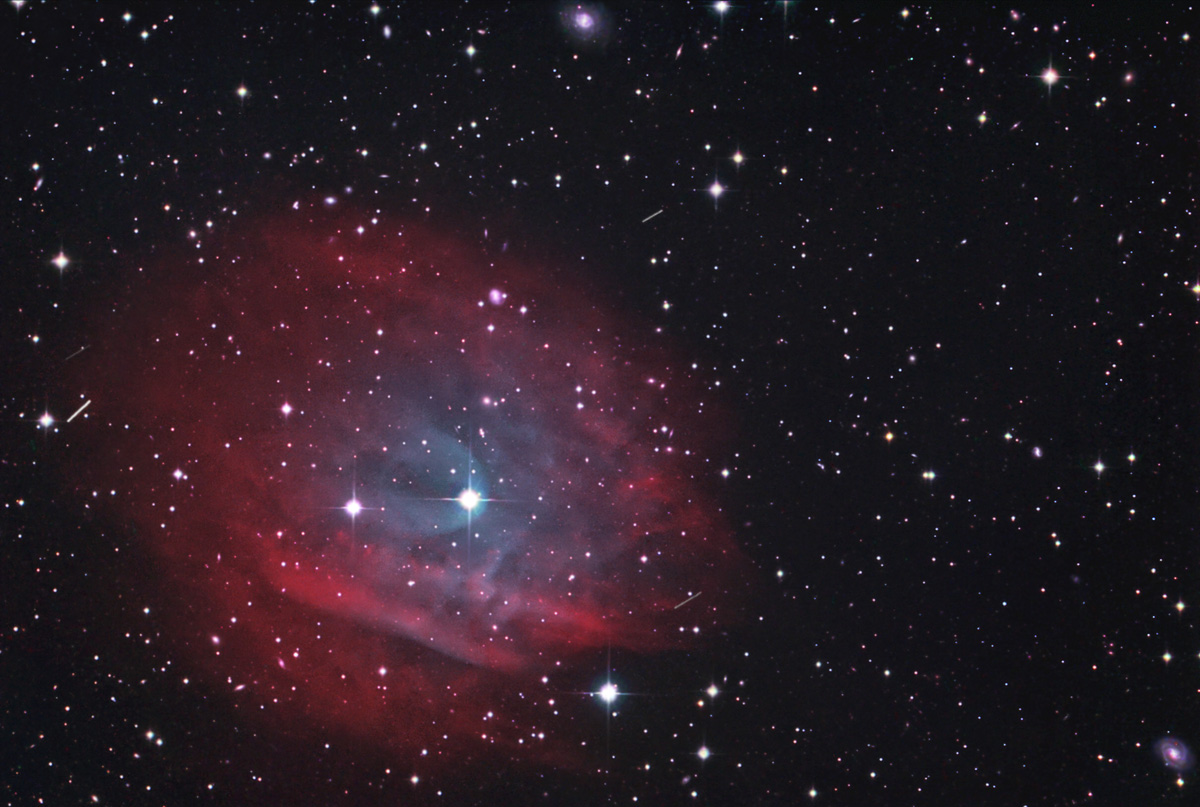
[back] PK 303.6+40.0 (Abell 35) in Hydra [NED]
Higher resolved image / höher aufgelöstes Bild (2000 x1656 Pixel)

|
(c) 2006 All astro photo images are copyrighted. They may not be used or reproduced without explicit written permission from the authors. |
|
60" |
|
About this Image / Über dieses Bild
| CCD: | ST10 XME |
| Image Type, Orientation: | L-Ha,OIII,OIII+B Composite, North is at 0:15 |
| Exposure time: | L: 14 x 300 sec 1x1, Ha: 7 x 300 sec. 2x2, OIII, B: 4 x 300 sec. 2x2, starting at 0:13 MESZ |
| Exposure date: | May 1st, 2006 |
| Location: | Capella Observatory at Amani Lodge, Kupferberg near Windhoek, Namibia |
| Filter: | FR03 + Astronomik Typ II L, Ha, OIII, B filters |
| Instrument: | Ganymed 60cm-Hypergraph in primary focus, f=1800 mm |
| Image seeing (FWHM): | 2.7" |
| Photographer: | Stefan Binnewies, Josef Pöpsel |
| Remarks: |
Abell 35 is a very dim PN with a visual size nearly identical to the Helix Nebula. Obviously it is much older than the Helix-Nebula, which is revealed by its not well defined shape. Four minor plantes are visible in the image (the position specification is relative to the brightest star in the image: At 13:00 :
2000 WL11. Image processed with CCDSharp and DDP. In addition to L and B two narrow band filters (Ha for red and OIII for green and together with B for blue) were used. With this filter combination the colors of the PN are displayed nearly in "true color", but this is not possible for the stars and galaxies in the image. Their continuum radiation can only be displayed insufficiently when narrow band filters are used. |
|
|
|
| Bemerkungen: |
Bei Abell 35 handelt es sich um einen sehr schwachen PN, der etwa die selbe scheinbare Größe am Himmel hat, wie der Helix-Nebel. Er ist aber offensichtlich deutlich älter als dieser, was sich durch seine nicht sehr wohl definierte Form verrät. Interessant sind die vier durchs Bild ziehenden Kleinplaneten (Positionsangabe relativ zum hellsten Stern des Bildes):
Bei 13:00 : 2000 WL11. |
Back to the Planetary Nebulae Overview / Zurück zur Planetarische-Nebel-Übersichtsseite